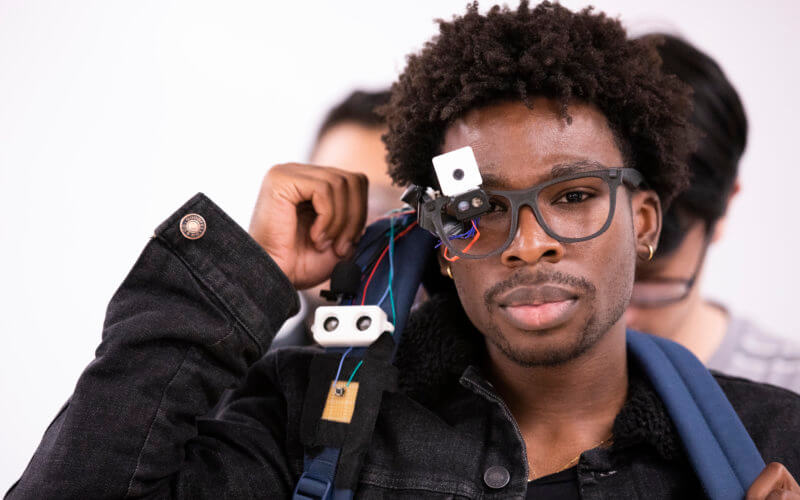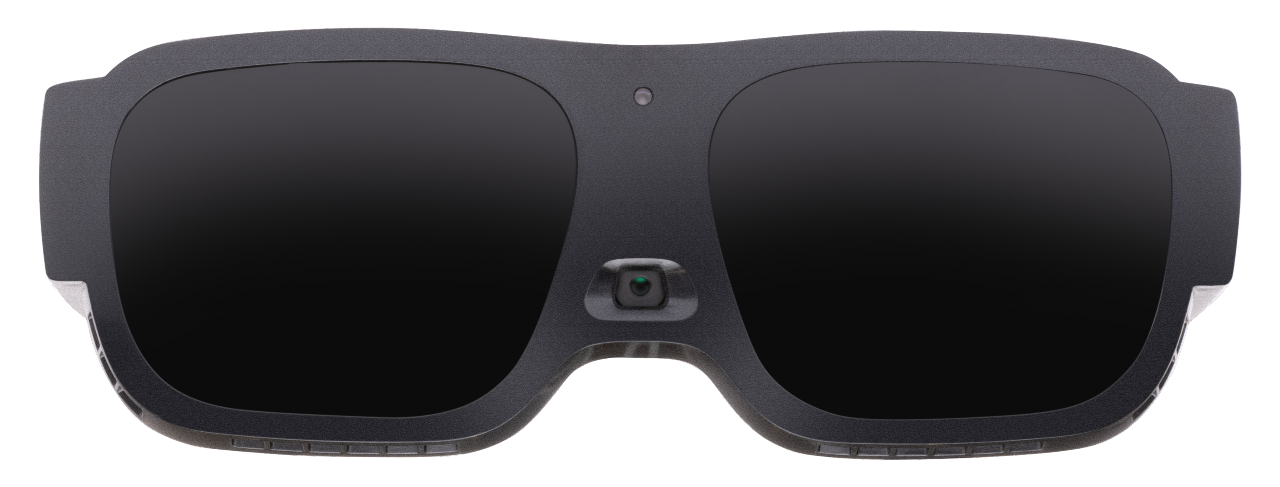Mobility Aids for Visually Impaired Users: Enhancing Independence and Navigation
Mobility Aids for Visually Impaired Users: Enhancing Independence and Navigation
Blog Article
Empowering Self-reliance With Assistive Innovation for the Blind
The assimilation of assistive innovation for individuals who are blind or visually impaired stands for a significant development in cultivating freedom and boosting quality of life. With an array of devices-- from display viewers to cutting-edge responsive tools-- these technologies not only help with navigation and interaction yet likewise promote social inclusion and engagement in different facets of life.
Comprehending Assistive Technology
Although assistive technology has actually developed significantly over the years, its fundamental function remains the exact same: to improve the high quality of life for individuals with handicaps, particularly those that are blind or aesthetically impaired. This innovation encompasses a wide series of tools and tools that promote self-reliance and capability in day-to-day tasks.
Assistive technology can be classified into low-tech and sophisticated remedies, each developed to satisfy specific needs. High-tech tools frequently consist of software application applications, specialized equipment, and adaptive devices that utilize sophisticated innovation to provide assistance in different contexts. On the other hand, low-tech services might involve day-to-day items that are customized to improve ease of access, such as magnifiers or tactile pens.
The assimilation of assistive innovation into the lives of individuals that are blind or aesthetically harmed not only promotes autonomy however also cultivates social addition and involvement in educational and specialist settings. By leveraging these technologies, individuals can browse their environments, accessibility info, and interact properly, consequently boosting their overall top quality of life. Comprehending assistive technology is crucial for caretakers, professionals, and supporters that intend to sustain people in maximizing their potential and achieving higher independence.
Kinds Of Assistive Instruments
Assistive gadgets for the blind and aesthetically damaged are important tools that enhance daily living by attending to certain challenges come across by individuals. These tools can be extensively categorized right into three major types: optical gadgets, digital devices, and sensory tools.

Sensory devices, such as Braille display screens and tactile maps, supply alternate means to obtain details. Braille displays transform electronic message right into Braille, making it possible for users to review touch. Responsive maps provide spatial understanding via increased structures and lines, enabling far better environmental understanding.
Together, these assistive tools empower people with visual disabilities to engage more completely with their surroundings, advertising higher freedom and self-confidence in day-to-day tasks.

Effect On Every Day Life
The integration of assistive technology right into the lives of individuals who are blind or visually impaired dramatically enhances their ability to communicate and browse with the world around them. Tools such as screen visitors, Braille displays, and mobile applications help with access to info, allowing users to involve with electronic content, communicate effectively, and handle everyday jobs separately.
Furthermore, technologies like clever glasses and navigation applications provide real-time aid in unfamiliar environments, boosting flexibility and confidence. These tools make it possible for customers to determine challenges, read signs, and even identify faces, hence fostering a feeling of autonomy in public areas. Furthermore, home automation systems, which can be controlled via voice commands, allow individuals to handle their living settings better, boosting convenience and security.
The impact of assistive technology expands past sensible tasks; it advertises social incorporation and emotional wellness. By linking the void in between individuals and their environments, these technologies encourage individuals to take part fully helpful hints in neighborhood activities, pursue instructional possibilities, and participate in purposeful partnerships. Eventually, the development of assistive modern technology is important in redefining the possibilities for people who are visually impaired or blind, causing a more available and comprehensive society.
Success Stories and Endorsements

Another powerful testimony originates from Mark, a current college grad that made use of screen analysis software program throughout his scholastic journey. This innovation enabled him to accessibility course materials and take part in conversations, eventually leading to his successful transition into the workforce. Mark credit ratings assistive innovation for equipping him read the full info here to attain his job goals, emphasizing its role in leveling the playing field for individuals with visual problems.
Additionally, recreation center have reported enhanced participation in their programs thanks to the introduction of available digital platforms. These systems have actually made it less complicated for people to attach, share sources, and assistance one an additional. These success tales collectively highlight the profound effect of assistive innovation in promoting self-reliance, improving lifestyle, and breaking down barriers for the blind and aesthetically impaired community.
Future Trends in Assistive Tech
Arising innovations are poised to revolutionize the landscape of assistive tech for people who are aesthetically damaged or blind. Advancements in fabricated intelligence (AI) and device knowing are enhancing the capabilities of tools, allowing more intuitive customer experiences. For example, AI-driven applications are increasingly able to read and identify items message aloud in real-time, providing customers with beneficial info about their surroundings.
Additionally, improvements in wearable innovation are developing new opportunities for self-reliance. Smart glasses equipped with enhanced fact features can overlay crucial details onto the individual's field of view, facilitating navigating and interaction with the environment. The assimilation of Net of Things (IoT) devices is enhancing availability in smart homes, permitting individuals to regulate devices and receive alerts with voice commands or tactile interfaces.
The advancement of braille display screens and responsive comments systems is additionally on the surge, advertising accessibility to electronic content and enhancing interaction. As these modern technologies proceed to advance, they promise to boost daily living, instructional possibilities, and employment prospects for people with visual problems. Continual cooperation in between technologists, individuals, and campaigning for groups will certainly be essential in guaranteeing these innovations meet the demands of the community successfully.
Final Thought
To conclude, assistive innovation plays a critical role in improving the independence of people who are visually damaged or blind. By supplying crucial devices and resources, these technologies help with enhanced gain access to, communication, and navigating to information, thus cultivating autonomy and self-confidence. The transformative influence of assistive devices not just promotes reliable interaction with the atmosphere yet also urges social addition and engagement in various elements of life, inevitably empowering users to thrive within their neighborhoods.
The assimilation of assistive technology for people who are blind or visually impaired stands for a considerable advancement in promoting self-reliance and boosting top quality of life.The integration of assistive modern technology into the lives of individuals who are blind or visually hindered not only look these up promotes freedom yet additionally fosters social inclusion and engagement in educational and expert environments. Eventually, the advancement of assistive innovation is important in redefining the opportunities for people that are aesthetically damaged or blind, leading to a much more easily accessible and comprehensive culture.
Numerous people who are visually damaged or blind have shared inspiring success tales that highlight the transformative influence of assistive modern technology on their lives.In verdict, assistive innovation plays an essential function in improving the self-reliance of individuals who are visually impaired or blind.
Report this page